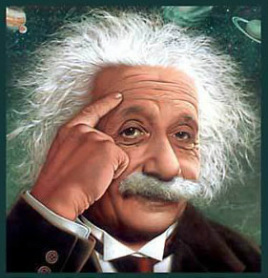| Particles on the classical view are concentration of energy and other properties in space and time, whereas waves are normally spread out over a larger region of space and time. The question whether light are streams of particles (corpuscles) or waves is not new. · Early in the nineteenth century experiments were suggested and made to show that light is a wave motion. A key figure in this endeavour was Thomas Young, who studied diffraction and interference of light already in 1803 with results that gave strong support to the wave theory of Christian Huygens as opposed to the particle or corpuscular theory of Isaac Newton. Further contributions were made by many other researchers, among them Augustin Jean Fresnel, who showed that light is a transverse wave. · O n the other hand, some phenomena also demonstrate the particle nature of light: 1) Albert Einstein’s photoelectric effect and 2) the Compton scattering of X-rays and 3) Planck’s energy quanta. It was Einsten who in 1921 said concluded that light also behaves like particles. |  The Key Idea Source: www.Google.ca  Albert Einstein (1879-1955) Source: www.Google.ca |
0 Comments
|
 RSS Feed
RSS Feed